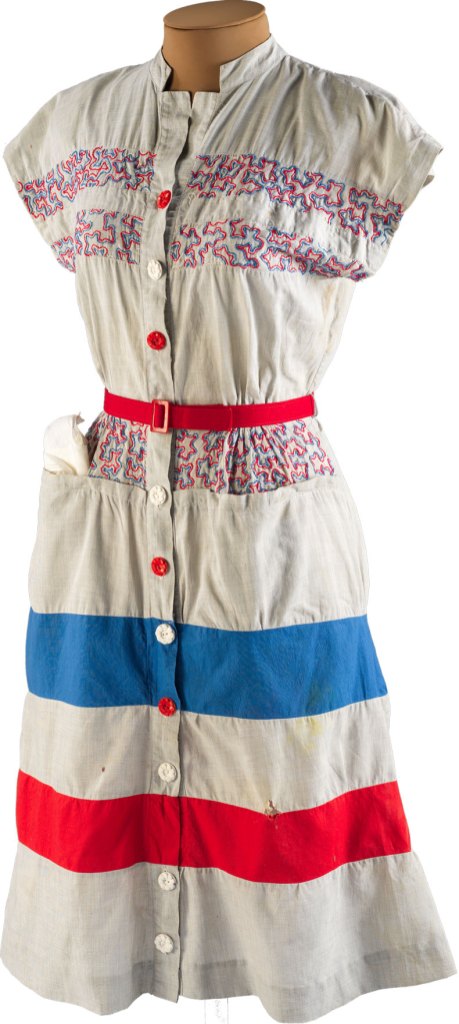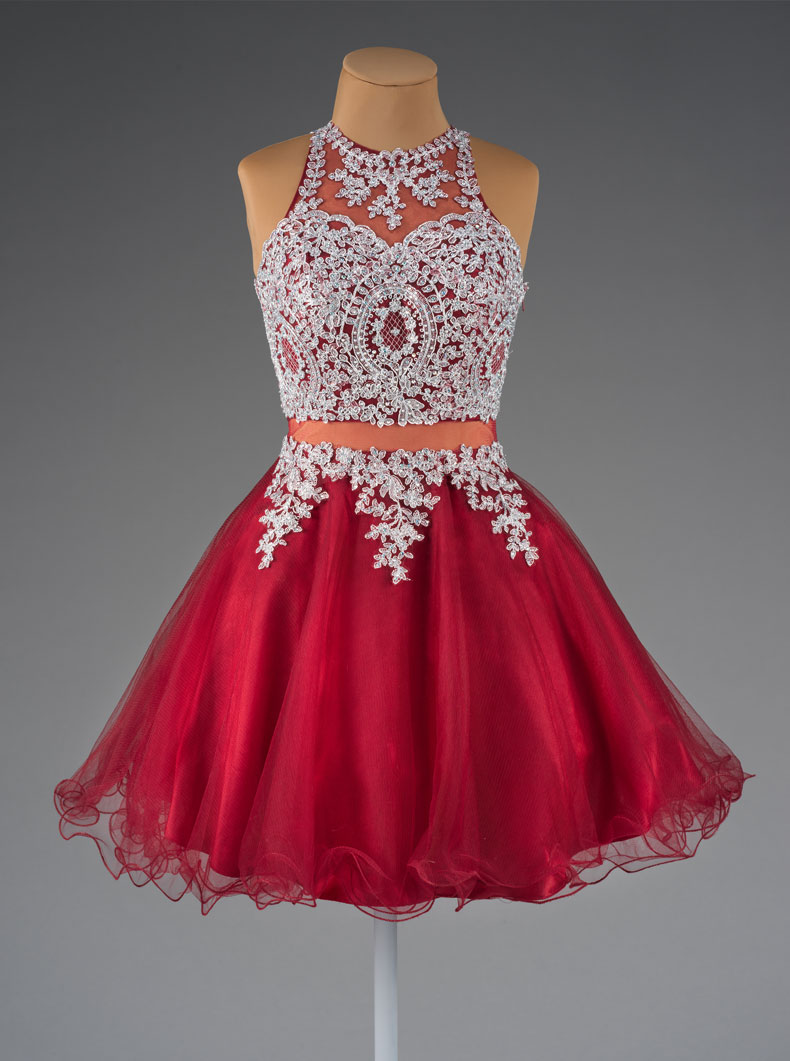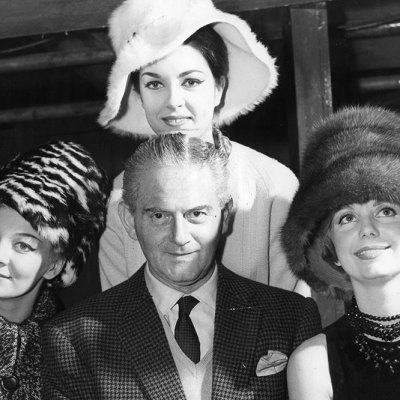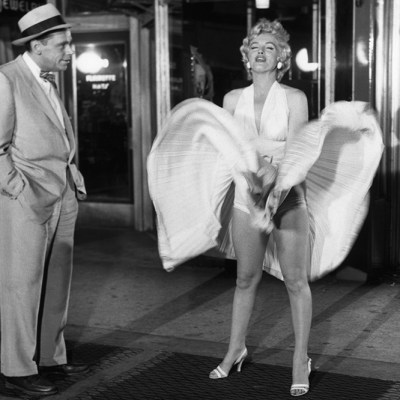Occupying one relatively modest gallery, this rather niche show at the New-York Historical Society punches far above its weight. During my visits, I keep overhearing emotions expressed, especially wistfulness and astonishment. Visitors reminisce about the ambitious fashion choices of their youth and their foremothers’ tastes in dowdy or psychedelic housecoats. And people’s eyes widen as they realise how much of the material on view is fragile, faddish, uncomfortable, controversial in its day, and perhaps even rescued from trash heaps.
About 30 of Smith College’s thousands of vintage and antique outfits are on display, along with accessories and ephemera. Workwear dominates: stiffly starched uniforms for nurses and waitresses, farm wives’ housedresses frayed and faded, a housemaid’s black leather boot with a hole in its sole. There are also clusters of ‘rebelwear’, which enabled the original owners to defy conventions and play-act: a tan cotton skirt from the early 1900s has legs hidden inside, which would accommodate bicycle riders, and a man’s grey wool suit from the 1920s was cinched in to fit a gender-nonconforming person assigned female at birth.
Housedress (1940s), Nelly Don brand. Photo: Anna-Marie Kellen. Smith College Historic Clothing Collection

A fluke of scholarly fate brought the garments of unfamous, unglamorous people to the attention of Smith College in western Massachusetts. In the 1970s, Kiki Smith, a Smith College grad turned theatre department professor, discovered that some garments in the school’s stage clothing collection were ‘too tender to survive a run of theatre performances’, as she writes in this exhibition’s companion volume. She set aside the more vulnerable pieces for use as ‘teaching and design resources’, and as word spread of her interest, ‘donations poured in from family attics’. She and Smith circles have further built the collection by haunting thrift shops, flea markets and vintage clothing stores, and scrolling through online sales. They have tenderly preserved and repaired the acquisitions in the college’s storerooms; visitors have come away amazed that so much heed has been paid to clothes ‘stained, torn, mended, and otherwise flawed’, as Vanessa Friedman, chief fashion critic of the New York Times, writes in the book’s introduction.
Pull-tab vest, turtleneck (Levi Strauss & Co.), striped bell-bottom jeans, woven peace-symbol belt (all 1970–75). Photo: Anna-Marie Kellen. Smith College Historic Clothing Collection

The exhibition was curated by Kiki Smith and her college colleague Rebecca Shea together with Anna Danziger Halperin and Keren Ben-Horin, curators at the New-York Historical Society’s Center for Women’s History. They found wonderfully catchy brand names emblazoned on the clothes’ labels: in the mid 1900s, dresses from ‘Slenderall by Modernaire’ offered flattering elasticity at the waistlines, and a line of floral maternity wear was christened ‘Blessed Event’. The curators have also brought out publications with DIY instructions for resourcefully keeping up with changing tastes: ripping apart men’s suits to make durable jacket and skirt ensembles during the deprivations of the 1940s, for instance, or recycling metal tabs from beverage cans in the 1970s to weave into chainmail vests. ‘A bit tedious to make but fun to have,’ the magazine Rags said of the vest, speculating that it might provoke interesting catcalls along the lines of ‘D’ja drink all that beer yerself, girlie?’
Only a few of the exhibition’s garments and accessories have traceable provenance trails. During the First World War, Smith College alumna Pidge Carr wore a grey-green wool suit at French battlefields, driving and repairing a transport van for recruits and supplies. A beaded black bikini from the 1970s enabled the rights activist Pamela Bostelmann to pay her New York rent by go-go dancing in bars. A late 20th-century red vinyl poncho, emblazoned with the slogans ‘JOIN US’ and ‘WE SUPPORT YOUR RIGHT TO REFUSE TO KILL’, belonged to the American peace protestor Frances Crowe. During seven decades of joining in public demonstrations, Crowe was arrested about 100 times – which she considered ‘not enough’, given the importance of her causes.
Left: Ambulance Corps uniform (c. 1917), Motor Corps of the National League for Women’s Service; right: Smith College Relief Unit uniform and hat (c. 1917), Abercrombie and Fitch Co. Photo: Anna-Marie Kellen. Smith College Historic Clothing Collection

In the show, some entire categories of clothes – such as overalls, wedding dresses, and feminist t-shirts – are represented only in photos, so it is difficult to get a sense of the objects’ three-dimensionality and textures. Kiki Smith’s companion volume is not an exhibition catalogue, which may disappoint some visitors; it analyses scores of outfits in addition to the ones on view (and the book maddeningly has no index). But what a tribute it is to the curatorial team that all their efforts have left me wanting even more. I’m not the only one: in the guestbook at the gallery exit, visitors long for examples of other garments, from bloomers to 1960s college crewneck sweaters.
As I eavesdrop in the gallery, older museum-goers point to a nylon garter belt manufactured around 1960, explaining that they used to feel compelled to wear this instrument of torture. A rust-coloured polyester pantsuit from the 1970s draws out memories of optimistically dressing mannishly at the outsets of careers, imagining climbing corporate ladders and breaking glass ceilings. I also saw visitors of many ages transfixed by a navy polyester maternity uniform for a McDonald’s worker – how much determination anyone wearing it must have mustered, to stay on her feet all day for minimal pay, far into pregnancy!
I walk around the exhibition remembering my own nonagenarian mother’s flowing, vibrantly polychrome clothes, suited to her career as an artist and art historian. This year, when she moved out of my childhood home, I gave away all but one garment in her closets: her maternity smock from the 1960s, striated abstractly in black and teal, maintaining her bohemian identity through pregnancy. For that piece of clothing, which fluttered around me before I could breathe, which I will soon wrap up and store away with some provenance notes pinned to the bag, Smith College’s scholarly investigations have given me a useful word: rebelwear.
Quinceañera dress (2019), Anny Lee brand. Photo: Anna-Marie Kellen. Smith College Historic Clothing Collection

‘Real Clothes, Real Lives: 200 Years of What Women Wore – The Smith College Historic Clothing Collection’ is at the New-York Historical Society until 22 June.



